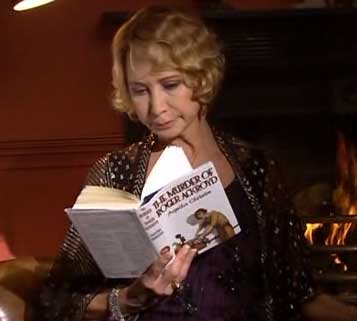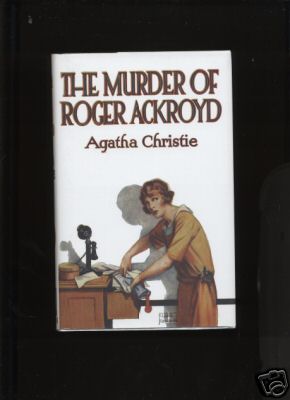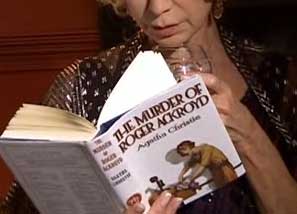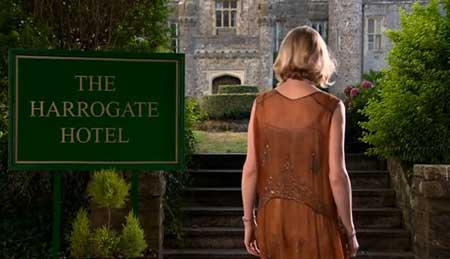I have been watching an episode of Doctor Who called “The Unicorn and the Wasp” that is set around Agatha Christie’s disappearance. The giant wasp flying around, in clear defiance of the laws of gravity, is bad enough. But I cannot for the life of me accept an episode that includes the following story holes:
1. Despite the fact that Agatha Christie disappeared for eleven days in December 1926, everything outside is inexplicably sunny. And the formal wear is inexplicably summery. No snow or winter winds, eh?
2. Donna, the companion played by Catherine Tate, brings up Miss Marple, who Christie introduced in December 1927 (“The Tuesday Night Club,” Issue 350 of The Royal Magazine), the year after her disappearance. This is a neat effort on Roberts’s part to suggest Christie being influenced by Donna. The problem is that Christie got the name from a railway station she was stranded in. Noticing the sign, the name stuck.
3. Donna also references “talking pictures” and Agatha Christie is baffled by such a concept. Actually, talking pictures were already showing as shorts. Before The Jazz Singer appeared in 1927, Al Jolson spoke in the 1926 Vitaphone short, “A Plantation Act.” And cinema with sound wasn’t entirely a crazed concept.
4. In front of an entire kitchen staff, the Doctor performs a wild pantomine and, using his Gallifrey biology, manages to escape cyanide poisoning. Everybody, including Christie (who was a nurse), accepts this preternatural discovery without a second thought. The next cut has everybody seated at dinner.
5. Where is Agatha Christie’s daughter? As I understand it, she went upstairs to kiss her shortly before disappearing.
I’m about 25 minutes into this, and I’ve now almost totally lost interest in the story. I can suspend disbelief up to a point. But when the writers clearly think so little of audience intelligence, when they cannot perform even the most rudimentary research on a major figure who, quite frankly, I’m hardly an expert on (all of the above, with the exception of the story reference, was lifted from my noggin) — a British icon, no less — one wonders whether there was even anyone trying for accuracy on this. And then one is reminded that Russell T. Davies remains the producer. The handoff to Steven Moffatt cannot happen fast enough.
UPDATE: Okay, maybe I’m just being too damn picky, but surely the art director on Doctor Who could have spent more time getting the title font kerning right, as well as making sure the artist’s signature was there the woman’s skirt. The drop shadows are off too.
A still from the episode:

The dust jacket from the 1926 edition of The Murder of Roger Ackroyd:

And here’s a closer shot. The woman is arched over too much. And I’m wondering if the actor is holding the book in that way because the art director messed up something on the lower left-hand corner.

And here’s Agatha Christie returning after her disappearance to the Harrogate Hydropathic Hotel, with a hilarious modern-looking sign and an exterior that looks nothing like the place (now called the Old Swan Hotel).

1 – That episode was supposed to be a comedy, and was always billed as such.
2 – The episode was written by Gareth Roberts, who also wrote The Shakespeare Code, where they also played, erm, a little loose with historical accuracy.
3 – The next two episodes are Moffat written so you can enjoy those. Then the one after was written by Davies and is really not too bad at all either.
I think you’ll enjoy Moffat’s upcoming two-parter. I’ll be interested to hear what you think of the most recent Davies-penned episode, “Midnight.”
Yeah, I agree that that episode was terrible, as, it seems, are Gareth Roberts episodes in general. But the two Moffat episodes that come next are among the best in the series, and easily the best this season. Moffat’s taking over the show, btw, Davies is out. So that’s good news.
I have to chuckle a bit… critiquing Dr. Who for its lack of realism! Ha!